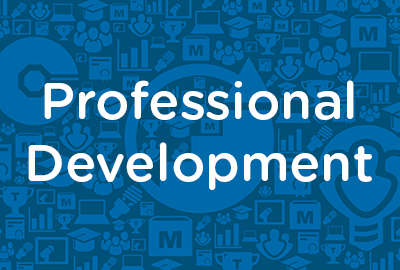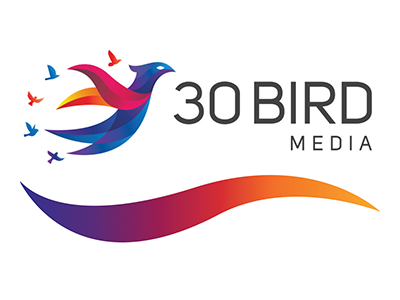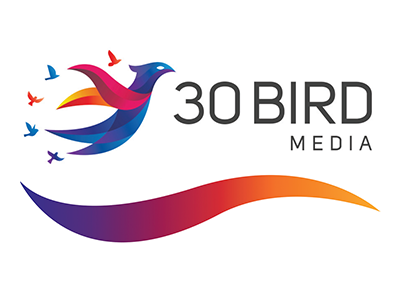 |
Sales: Qualifying |
0.50 |
In this course, you will learn how to improve your listening skills to better understand customers’ needs and decision-making criteria. You will also learn how to use questioning techniques to help customers recognize the benefits of your products and services. |
 |
Whole Child Approach |
1.25 |
This course covers the Whole Child Approach. It is just one out of many education courses we offer. This course will help you develop new knowledge about the Whole Child Approach and why it is significant in education. It will teach the importance of character development, social and emotional learning (SEL), personalized learning approaches, interventions, and assessments. This course will also explain culturally responsive teaching and how parent and community engagement is crucial to students' success. |
 |
Managing Performance: Legal Appraisals |
0.84 |
In this course you will learn to: identify legal appraisals and responsibilities in relation to laws enforced by the EEOC, and identify risks of legal challenges and the importance of maintaining positive communication. |
 |
Making Your Home A Safer Place |
0.75 |
This course covers household safety. This includes fire and kitchen safety, emergencies, infant safety, and more. This course will help you learn about the best practices for everyone inside the house, from infants to pets. It is just one of the many health and safety courses we offer. |
 |
Innovative Learning for Modern Educators |
1.50 |
This course is designed to empower educators with the knowledge, skills, and tools necessary to seamlessly integrate innovative learning strategies into their classrooms. It is just one out of many educational professional courses we offer. Educators will develop the expertise to elevate student engagement, retention, and outcomes, surpassing the limitations of traditional teaching methods. Tailored to inspire, challenge, and guide, this course is a transformative journey for educators, equipping them to create enriched and dynamic learning experiences. |
 |
Electrical Safety |
0.75 |
This course covers OSHA’s role and standards regarding electrical safety/hazards, defines the basic fundamentals of electricity, identifies and recognizes safety hazards, and describes protection methods against electrical hazards.
|
 |
Zoonotic Disease and Biosecurity |
2.00 |
Every year, zoological organizations are faced by new challenges in maintaining the health of their animal collections. Zoonosis, or disease that can be spread between species, forms one of the greatest threats to the safety of animals, guests, and keepers. Using a case study from a zoonotic disease concern at the San Diego Zoo, you will learn the basics of zoonotic disease identification and prevention, including standard record keeping, best practices, health and safety protocols for keepers, and the understanding of how disease can be spread. |
 |
Introduction to Eldercare |
2.75 |
This course will equip you with the essential knowledge to navigate the unique challenges and opportunities that come with caring for older adults. |
 |
Project Management - Basic: Scope Definition, Verification, and Change Control |
1.50 |
This course will cover how to identify the process and benefits of scope definition and verification, and develop a work breakdown structure (WBS) and work package. You will also learn how to identify the types of information that stakeholders need in order to verify a project’s scope, and determine the timing of scope verification. You will be able to better understand how to control changes in project scope, identify the benefits of a scope change control system, and describe why it’s important to create a project database. |
 |
Creativity and Innovation: Personal Creativity |
1.34 |
Creativity is often considered a talent that some people have. Actually, creativity's a skill that everyone can nurture through exercise and practice. You can prepare yourself both mentally and physically to be creative.
In this course you will learn to: prepare yourself mentally and physically to be creative, and use your experiences, innocence, intuition, and sense of adventure to increase your creativity. |
 |
Emergency Protocols for School Settings |
1.25 |
This course will take you through various topics related to emergency protocols in schools. You will learn how an Emergency Operations Plan is created and implemented. This course will help you understand your role in supporting before, during, and after school threats and hazards. This course will also explain the various assessments schools use to determine which threats and hazards are necessary to prepare for, how to collaborate with local and state organizations, and what items are necessary to include in an Emergency Operations Plan. |
 |
Cross-Cultural Business Communication: Addressing Cross-Cultural Issues (Instructor Guide) |
1.00 |
When communicating with coworkers, it is very important to respect other cultures. You should refrain from using humor that might offend people from other cultures, and avoid stereotypes that might affect how you treat your coworkers.
Before communicating with employees who belong to a different culture, it is important to research their cultures and understand clearly what is expected from your communication. You should determine what types of communication are most appropriate in specific situations. For example, you should investigate the most appropriate method for communicating a behavioral problem to an employee. Some cultures prefer profuse praise to cushion the constructive feedback, while others prefer a more direct approach. The most important thing to communicate to employees of different cultures is respect. By approaching them in accordance with their cultural standards and expectations, you’ll show respect for their cultures and your communication will be enhanced.
In this course you will learn to: identify gestures used in different cultures and build a cross-cultural team, and discuss guidelines for writing cross-cultural documents and assembling a translation team.
This Instructor's Edition of this course includes notes and suggestions to assist you in presenting the material, whether in an in-person classroom setting, or as an instructor-led online or distance-learning course. It also provides you with the answers to questions found in mid-lesson activities, as well as in the quiz that concludes the course. |
 |
Project Teams: Preparing Teams for Project Work |
1.00 |
Building a project team is more complex than assigning employees to the team. Team members must feel a sense of dedication to other team members, as well as to the project itself. Members who are not dedicated to the project team often disregard meetings, deadlines, and commitments, causing the entire team to suffer. To avoid these problems, the team managers and supervisors need to encourage team building to benefit the project, the team members, and the organization.
In this course you will learn to: empower and motivate a project team and develop positive culture in a project team, identify the causes of change in a team and manage change, and improve existing project teams. |
 |
Employee Performance: Conflicts (Instructor Guide) |
0.67 |
In any organization, there are individuals with unique personalities and responsibilities. Conflicts are an inevitable part of employee interaction. Knowing how to resolve conflicts when they arise is vital to the well-being of any company.
In this course you will learn to: identify common myths associated with workplace conflicts, common reasons that conflicts arise, and types of workplace conflict, and distinguish between conflict management and conflict resolution.
This Instructor's Edition of this course includes notes and suggestions to assist you in presenting the material, whether in an in-person classroom setting, or as an instructor-led online or distance-learning course. It also provides you with the answers to questions found in mid-lesson activities, as well as in the quiz that concludes the course. |
 |
Egress, Fire Prevention, & Fire Protection |
0.65 |
In this course, participants will learn about escape routes and exits, emergency action plans, fire prevention plans, fires, fire extinguishers, and workplace fire prevention tips. |
 |
Creating a Supportive Classroom Community (CDA 3) |
2.00 |
Learn ways to bring out nurturing, caring behaviors in children and youth to create a classroom community where children and youth support each other. Learn how to use non-competitive games to foster acceptance of all children and youth. Identify the strengths and weaknesses for both you and the children and youth in your program, and how to put the strengths to good use creating a sense of acceptance and community. This course is designed to be part of a Child Development Associate (CDA) Credential™ curriculum. It covers CDA Subject Area 3: Supporting Children's Social and Emotional Development and may also be taken as a stand-alone learning event or as part of a broader early childhood education curriculum. |
 |
Microsoft Excel 2019 Complete |
24.00 |
Excel 2019 Complete provides the concepts and skills to be productive with Microsoft Excel 2019, starting with fundamentals and working up to advanced tools and techniques. This course maps to the objectives of the Microsoft Office Specialist and Expert exams for Excel 2019. Objective coverage is marked throughout the course, and you can download an objective map from 30bird.com.
Students will benefit most from this course if they want to use Excel 2019 to perform real-world tasks, from common workplace tasks to complex operations with large amounts of data. If students intend to take a Microsoft Office Specialist or Expert exam for Excel, this course offers complete coverage of all the objectives for both exams.
The course assumes students know how to use a computer, and that they're familiar with Microsoft Windows. It does not assume that they've used a different version of Excel or another spreadsheet program before. |
 |
Advanced Interpersonal Communication: Organizational Culture |
1.34 |
An organizational culture is the personality of an organization. This personality is both determined and accepted by the organization’s members. For example, an organization might have a culture that is youthful, energetic, and fast-paced. In this type of culture, decisions are made quickly, and employees are empowered to take action in a wide variety of situations. Another organization might be more straight-laced and policy-oriented. This organization would be much more formal and serious in the way it does business. It is important to recognize and understand the culture of an organization, so that you can determine your fit with the organization.
In this course you will learn: to determine the nature of an organization’s culture, to use the cultural network to your advantage, and identify the characteristics of the roles exhibited in the network, to identify the elements of physical culture that affect interpersonal communication, and to identify the ways in which managers can build a positive culture. |
 |
Paraprofessional Math Skills 2: Geometry and Measurement |
2.50 |
This course covers Paraprofessional Math Skills: Geometry and Measurement. It is just one out of three Paraprofessional Math Skills courses, and one out of eight ParaPro prep courses that will prepare you on K-12 topics. This course will help you develop your knowledge of these mathematical concepts and help you apply them to abstract and real-life situations. After taking these prep courses, you should be prepared for the ETS ParaPro Assessment. This course can be taken as a stand-alone learning event, as part of a broader paraprofessional curriculum, or in preparation for the ParaPro Assessment.
After completing this course, you will be able to:
Understand and represent time and money in more than one way.
Convert between units or measures in the same system.
Identify basic geometrical shapes.
Perform computations related to area, volume, and perimeter for basic shapes.
Graph data on an xy-coordinate plane. |
 |
Advanced Interpersonal Communication: Customers and Vendors (Instructor Guide) |
0.50 |
Your customers include anyone who uses your company or organization to obtain goods and services. Customers might be internal or external. An internal customer is a member of your organization and can be a supervisor, colleague, or subordinate. An external customer is someone from outside your organization. Each customer is of equal importance, regardless of the amount of business that customer provides to your organization. You should provide the same level of quality goods and services all your customers, and all are equally deserving of efficient and effective communication.
In this course you will learn: to respond to customers’ complaints, and to reject a vendor’s contract without rejecting the vendor, and address a complaint to a vendor.
This Instructor's Edition of this course includes notes and suggestions to assist you in presenting the material, whether in an in-person classroom setting or as an instructor-led online or distance-learning course. It also provides you with the answers to questions found in mid-lesson activities, as well as in the quiz that concludes the course. |
 |
Spinal Motion Restriction Decisions |
1.50 |
Two of the University of Rochester’s finest educators discuss the decision-making that is involved with Spinal Motion Restriction.This enlightening discussion offers information that will allow providers to better interpret standing protocols.Subsequently providers will be able to create and execute better treatment plans.
Jeremy Cushman M.D., M.S., NYS Paramedic is the Chief of the Division of Prehospital Medicine, Department of Emergency Medicine, at the University of Rochester.
Mark Gestring, M.D., F.A.C.S., is the Director of Adult Trauma at the University of Rochester’s Regional Trauma Center.
Enjoy the conversation as these two experts in their respective fields escort you through the nuance that every provider should consider when treating a patient with possible spinal trauma. |
 |
CWNP Certified Wireless Specialist - Exam CWS-101 |
8.00 |
Certified Wireless Specialist - Exam CWS-101 covers the fundamentals Wireless Fidelity (Wi-Fi) technologies for wireless communications. The student will learn the basics of how Radio Frequencies (RF) are utilized by Wi-Fi with hardware and software to create wireless local area networks (WLANs). Upon completion of this course, the student will have the knowledge required for the CWS-101 exam and CWS certification.
This vendor neutral course assumes that the student has a basic knowledge of using wireless computing devices and wireless networks. The exam objectives are marked throughout the course, with applicable acronym and objective indexes. |
 |
Safety Communication and Training Techniques |
1.50 |
This course covers certain safety and logistics measures for the workplace. This includes topics like different types of safety training, creating safety programs with different learners in mind, and how to use various types of media to communicate objectives. |
 |
Construction Safety & Prevention Program: OSHA Inspections |
0.50 |
This course covers the process of OSHA inspections, the penalties incurred when a workplace does not satisfy OSHA standards, and how to properly respond to an OSHA inspection. |
 |
E-Mail Etiquette: E-Mail Messages |
0.50 |
In this course, you will learn how to take advantage of the headers in e-mail messages. You will learn about the “To” field, in which you should type the recipient’s e-mail address. You will also learn when to send carbon copies and blind carbon copies of messages. You will learn the importance of writing a proper subject field for e-mail messages and that the header also includes the date and time of sending messages. Finally, you will learn how to construct the body of an e-mail message, add a personal touch to your messages by including a proper greeting, relay information by placing it in the appropriate order, and use different types of lists effectively. You learned the correct way to write long e-mail messages to keep recipients interested in the information and how to effectively close e-mail messages. |


























